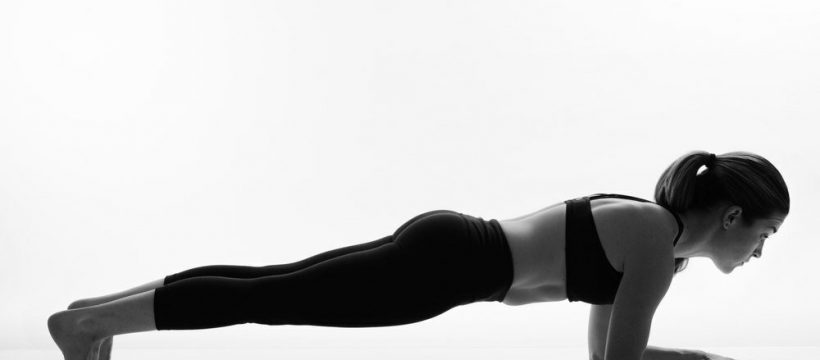Suitable for beginners, intermediates and advanced athletes, our abdominal workouts are specifically designed to maximise muscle recruitment and therefore development. Our workouts are a combination of dynamic and stability exercises which will leave your abs screaming!
There are two main functions of the abdominals; flexing the spine and stabilising the trunk. When most people train their abdominals they target them via the former, the flexing of the spine, by performing exercises such as sit-ups and crunches. For maximum development we should also consider exercises which tax the abdominals in their other prominent role – stabilisation.
Our abdominal workouts involve both dynamic and stabilising (also known as isometric) exercises for maximum results. Our exercises are also those which are most effective and targeted. For instance, we do not include sit-ups which highly involve the hip flexor muscles instead of focusing on abdominal recruitment via spine flexion.
You can perform the below workouts two to three times per week. They should only take fifteen to twenty minutes so they are ideal to place at the end of your weight training sessions.
Beginner workout
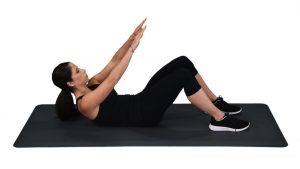
Crunches
10 reps | 3 sets | 2 mins rest
Lay on the floor with your knees bent and feet firmly planted. Bend your arms at the elbows and place your hands just behind your ears. The crunch is performed by raising your shoulders off the floor and bringing the rib cage towards the pelvis. The movement is acute – do not bring your lower back off the ground. Slowly reverse the movement once peak contraction is made.
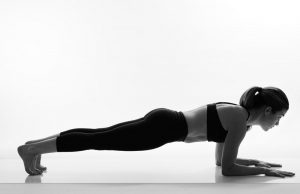
Plank
30 second hold | 3 sets | 2 mins rest
Lay face down on the floor, resting your elbows beneath you. Raise your torso so your body is aligned and core is tight. Hold this position for the count.
Intermediate workout
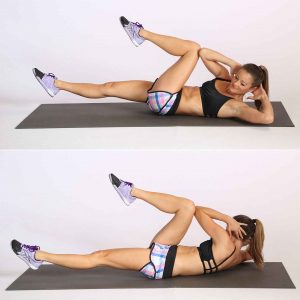
Diver’s crunch
12-15 reps | 3 sets | 2 mins rest
The diver’s crunch is performed in the same way as a traditional crunch (see above) but with your arms outstretched above your head and your hands grasped together (like a diver before entering a pool). This increases the difficulty of the exercise by some margin!
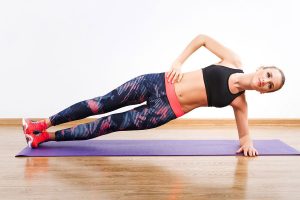
Side plank
45 second hold | 3 sets | 2 mins rest
This is also known as the side bridge. Lie on your side, forearm resting on the floor and body straight. Raise your body so it is being supported by your arm and keep your body aligned so your core is tight. Hold for the count.
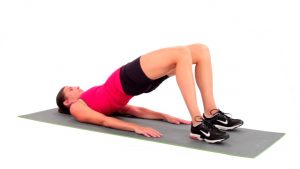
Lying hip raise
12-15 reps | 3 sets | 2 mins rest
This is best thought of as a reverse crunch, by which we are bringing the pelvis towards the ribcage opposed to the other way around like during a crunch. Whilst lying on the floor, lift your legs so they are ninety degrees to the ground. To perform a repetition lift your butt off the ground and lift your feet higher into the air. Like during the crunch, focus on shortening the distance between your hips and ribcage. Hold this position for a second and then slowly reverse.
Advanced workout

Over-head medicine ball crunch
10-15 reps | 3 sets | 2 mins rest
Here we are using a medicine ball to further increase the resistance during the crunch. The medicine ball should be held over-head so the exercise is performed in a similar fashion to the diver’s crunch (see above) but with added resistance.
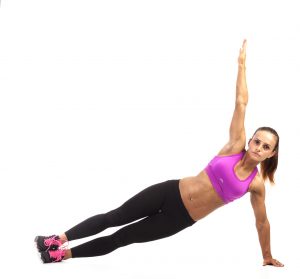
Side plank with feet elevated
1 min | 3 sets | 2 mins rest
Perform the side plank (see above) but with your feet on a weight bench so that they are elevated. Try to pick an elevated platform at the height which will ensure your torso is level (i.e. parallel to the ground) when holding the exercise.
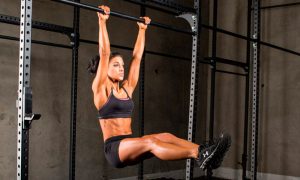
Hanging leg raise
10-15 reps | 3 sets | 2 mins rest
You will require a chin up bar with a decent level of clearance to perform the hanging leg raise. To begin a repetition from your hanging position, raise your knees upward towards your chest whilst maintaining a slight bend in your knee throughout. Bring your knees towards your chest so your hips are brought closer to your ribcage. Slowly reverse the movement back to the starting position.
